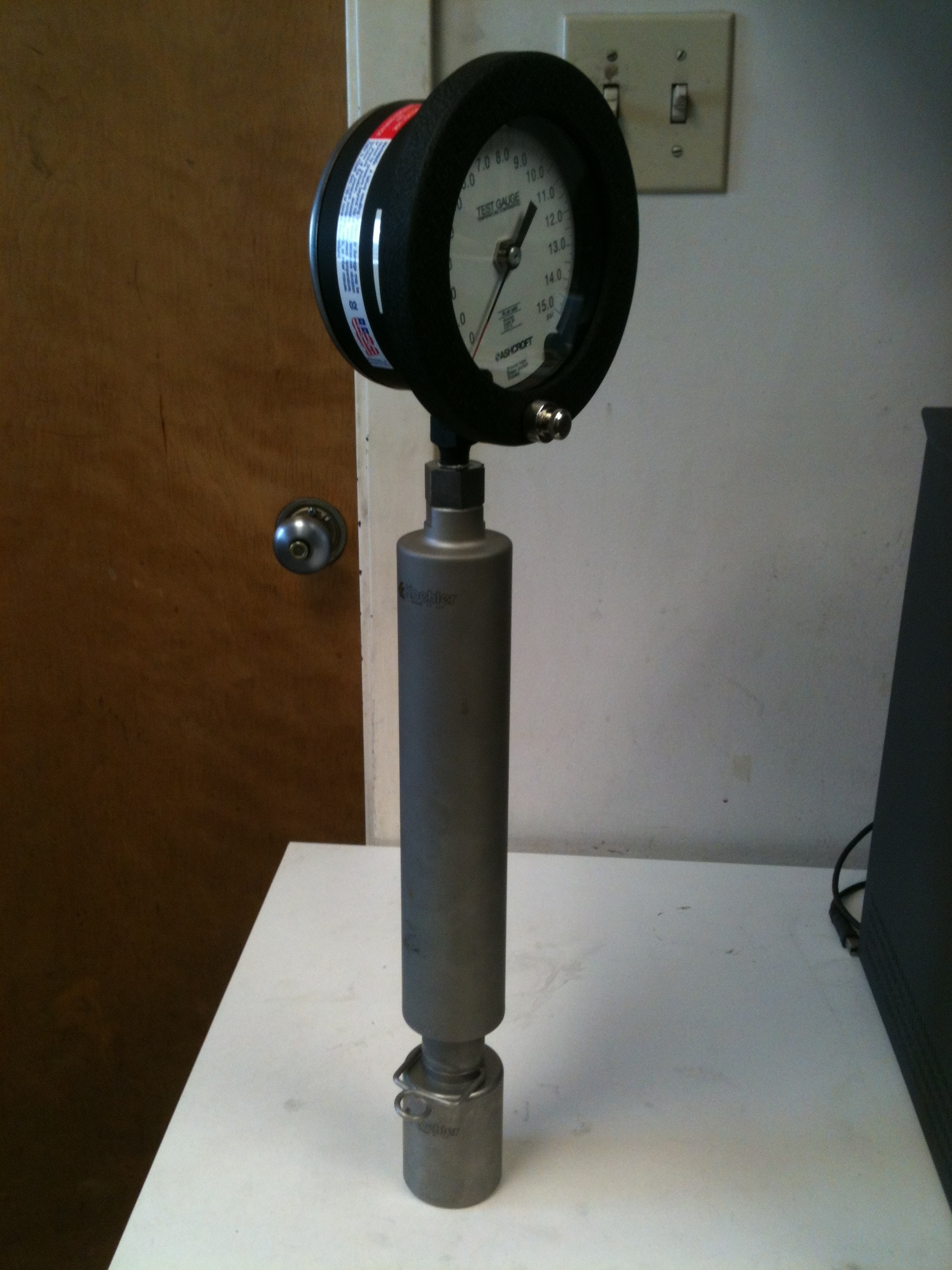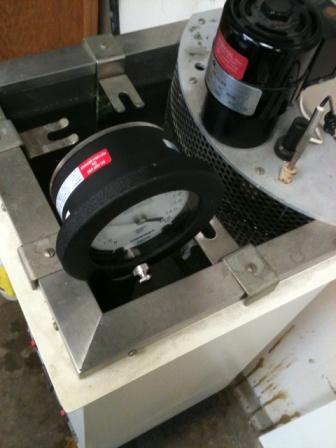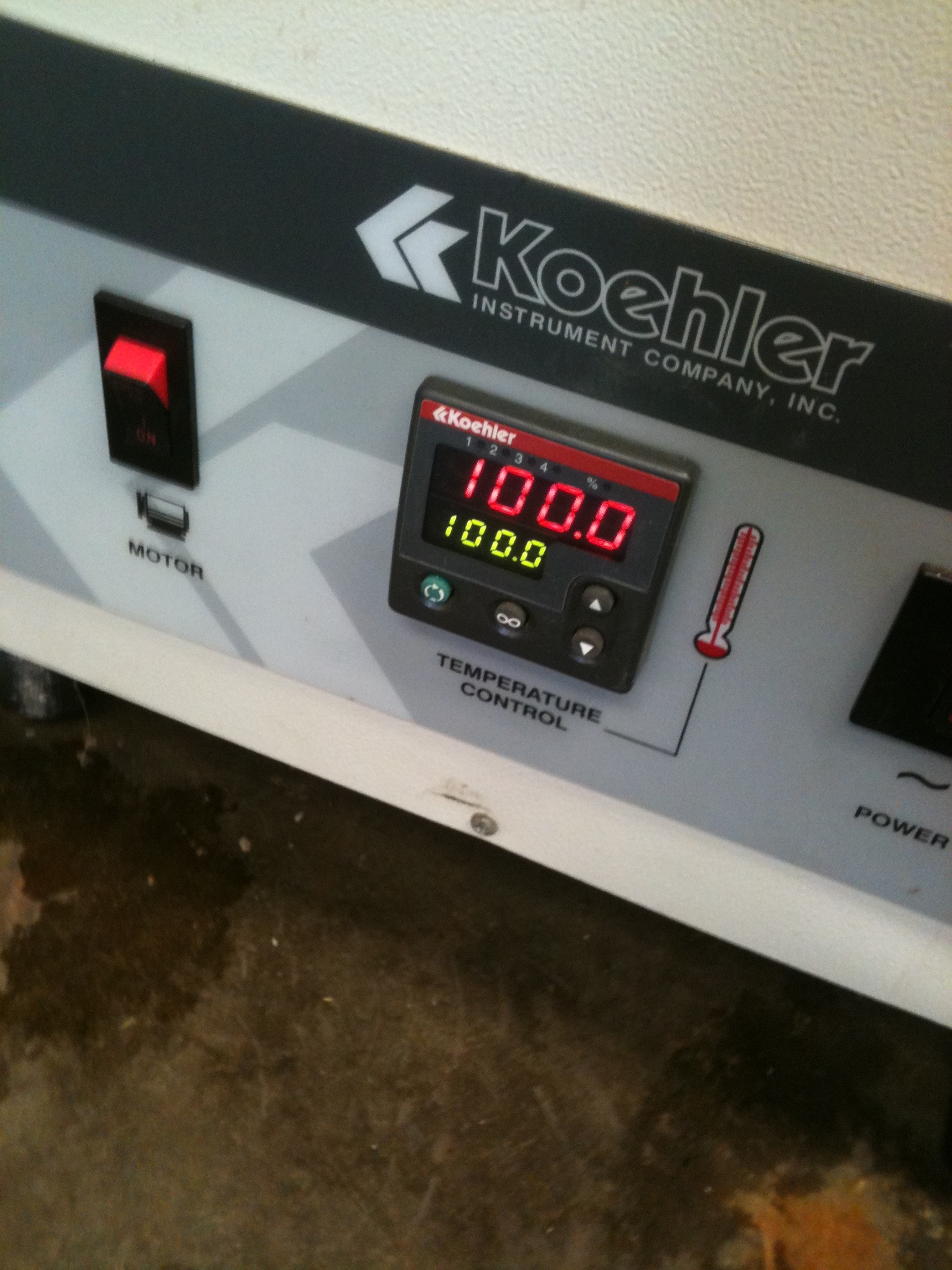So let's just measure our fuel's RVP. Sounds simple enough, but when I found that the equipment needed to do this cost $7000—a $6000 precision water heater and a $1000 vessel for containing and measuring the fuel head pressure, I went to Ebay. There, I found an engine manufacturer’s surplus Koehler water bath used to precisely heat the fuel samples to 100.0F. Who in the world, but me, would want to buy a used RVP test bath? So it had languished on Ebay with zero bids since August, and I came along and “bought it now” for 20% of new cost. But it came with no fuel testing vessel—called a RVP “bomb” made of stainless steel, hydro-tested to 1000psi and a lab certified pressure gauge. I had to bite the bullet and buy a new fuel test “bomb” (yes, that’s what they call them!) from Koehler for $700, and a new $400 15psi .25% accuracy pressure gauge was Ebayed for $30. So now we can test for stale gas—hopefully before we wreck parts! I hated high school chemistry. The only enjoyment I got from those awful lab sessions was making hydrogen bombs from dissociating hydrogen and oxygen from water then igniting those with a match.. Acetylene bombs were also great fun, especially when several of my equally deviant pals and I pooled our precisely rationed grams of calcium carbide to mix with water! But here I am, trying to figure out the Reid Vapor (Vapour) Pressure of racing gasoline! My annoyed chemistry teacher would be proud, if he were still alive. An RVP test takes about an hour—about as much time as it takes to set up a sled or bare engine onto the dyno. So from here on, RVP testing can be done prior to race gas dyno testing/ tuning, so the one final mysterious variable might be eliminated. 
Koehler RVP “Bomb”. The gasoline to be tested is poured into the shorter lower portion of the stainless steel cylinder, which unscrews from the hollow upped air chamber. After the lower chamber is filled with gasoline to be tested, it is attached to the upper chamber.

Here’s the RVP bomb sitting in the Koehler circulating water bath at 100.0F. It holds about 20 gallons of 100.0F water agitated by a propeller driven by the motor on the upper right.

The yellow temperature numbers are thermostat setting, and the red temperature numbers are the exact temperature of the water circulating around the “bomb”. Precision is required!
